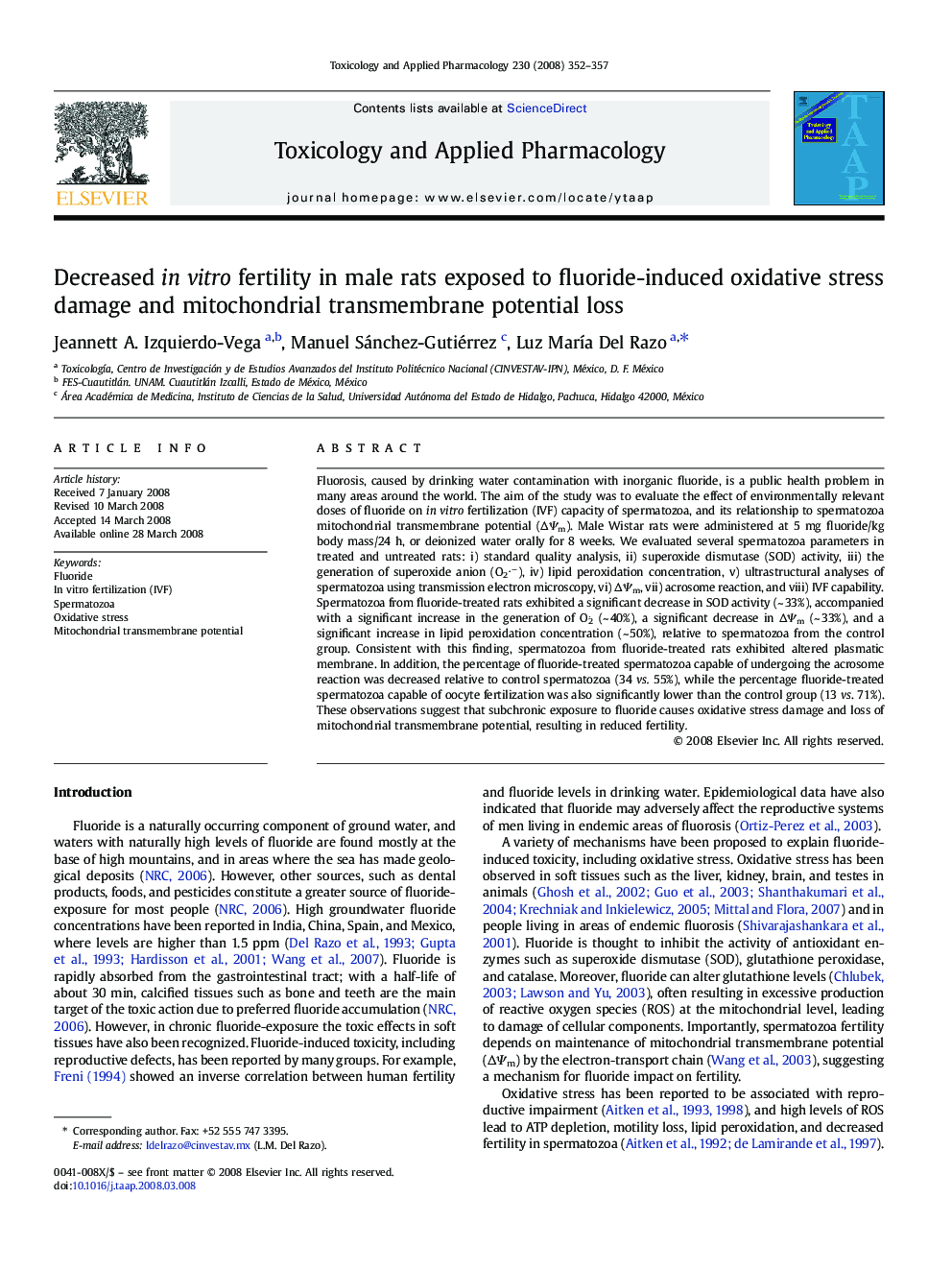| کد مقاله | کد نشریه | سال انتشار | مقاله انگلیسی | نسخه تمام متن |
|---|---|---|---|---|
| 2571343 | 1561179 | 2008 | 6 صفحه PDF | دانلود رایگان |

Fluorosis, caused by drinking water contamination with inorganic fluoride, is a public health problem in many areas around the world. The aim of the study was to evaluate the effect of environmentally relevant doses of fluoride on in vitro fertilization (IVF) capacity of spermatozoa, and its relationship to spermatozoa mitochondrial transmembrane potential (ΔΨm). Male Wistar rats were administered at 5 mg fluoride/kg body mass/24 h, or deionized water orally for 8 weeks. We evaluated several spermatozoa parameters in treated and untreated rats: i) standard quality analysis, ii) superoxide dismutase (SOD) activity, iii) the generation of superoxide anion (O2–), iv) lipid peroxidation concentration, v) ultrastructural analyses of spermatozoa using transmission electron microscopy, vi) ΔΨm, vii) acrosome reaction, and viii) IVF capability. Spermatozoa from fluoride-treated rats exhibited a significant decrease in SOD activity (~ 33%), accompanied with a significant increase in the generation of O2 (~ 40%), a significant decrease in ΔΨm (~ 33%), and a significant increase in lipid peroxidation concentration (~ 50%), relative to spermatozoa from the control group. Consistent with this finding, spermatozoa from fluoride-treated rats exhibited altered plasmatic membrane. In addition, the percentage of fluoride-treated spermatozoa capable of undergoing the acrosome reaction was decreased relative to control spermatozoa (34 vs. 55%), while the percentage fluoride-treated spermatozoa capable of oocyte fertilization was also significantly lower than the control group (13 vs. 71%). These observations suggest that subchronic exposure to fluoride causes oxidative stress damage and loss of mitochondrial transmembrane potential, resulting in reduced fertility.
Journal: Toxicology and Applied Pharmacology - Volume 230, Issue 3, 1 August 2008, Pages 352–357